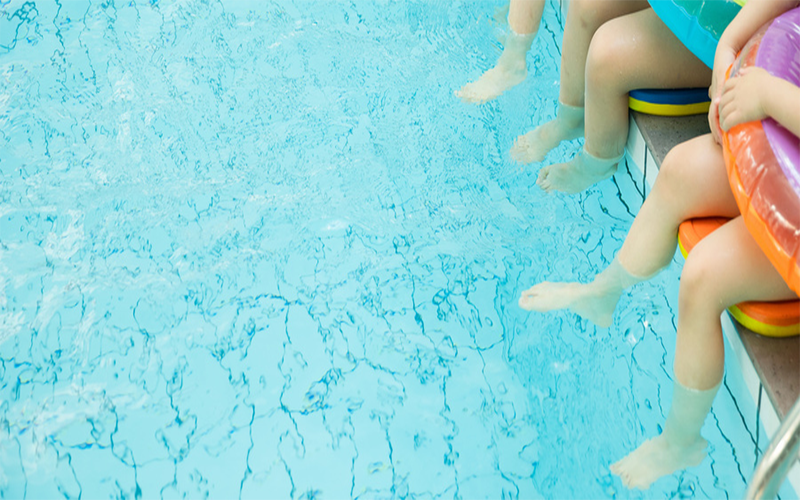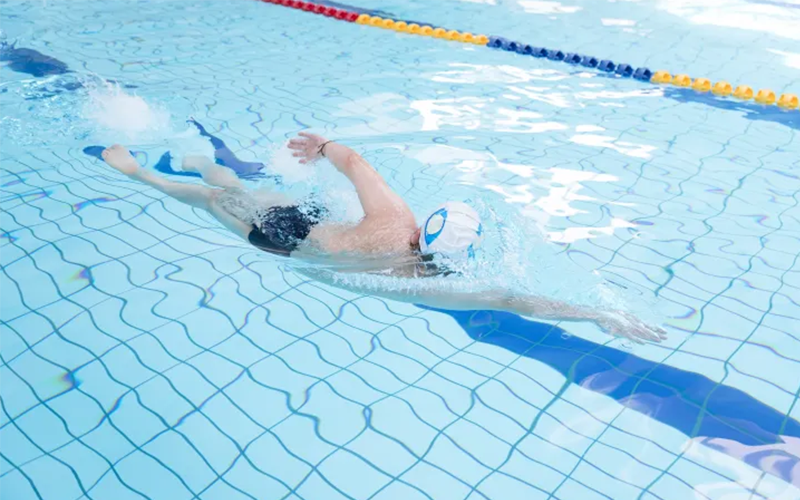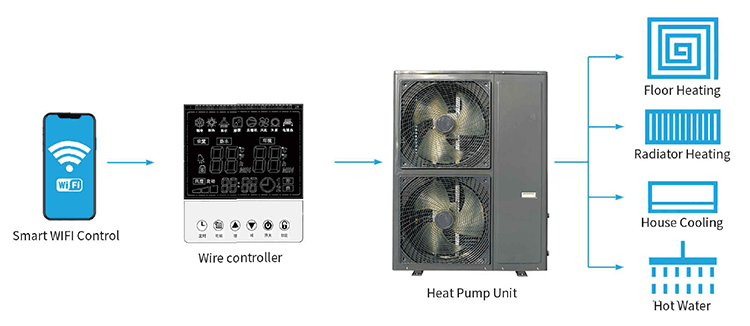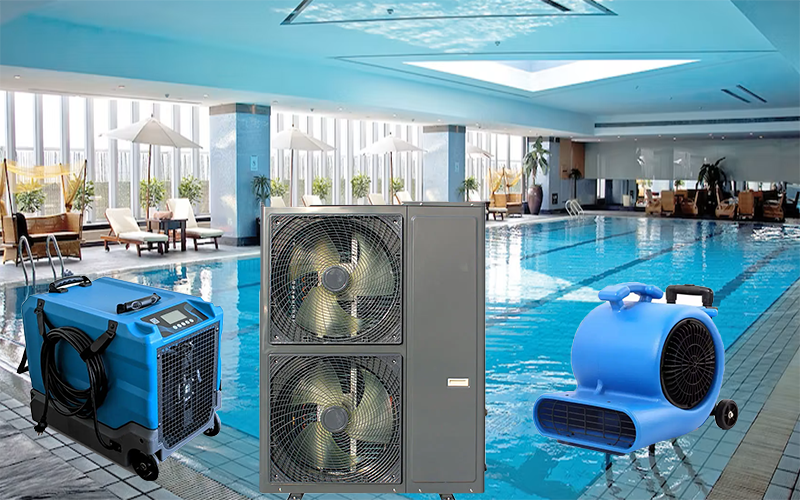With the improvement in life quality, many people choose indoor swimming pools for summer heat relief. At the same time, people pay more and more attention to the quality of indoor air and water in swimming pools.
Generally speaking, the temperature of the indoor thermostatic swimming pool is 22-26 ℃, the temperature of the children’s swimming pool is 24-29 ℃, and the temperature of the parent-child swimming pool is 30-34 ℃. The higher the water temperature, the greater the evaporation of the water surface, and the higher the indoor humidity. High-humidity air not only affects human health but also damages buildings.

The importance of dehumidification in indoor swimming pools
1. Prolong the service life
– In order to protect the decoration and prolong the service life of the building, humidity must be controlled to prevent condensation
The continuous evaporation of water in the indoor swimming pool will cause high indoor air humidity, which will make the metal structure buildings more prone to rust and corrosion. Excessive moisture will destroy walls, floors, and ceilings. The reproduction of bacteria can deteriorate the air quality, and the condensation of water vapor can also deteriorate the building materials.
2. Improve the comfort of the swimming pool
– in order to protect the health of swimmers, the relative humidity of the swimming pool must be reduced in a reasonable range
The new international clearly stipulates air quality indicators above the water surface. First, the ozone concentration 20 cm above the water surface shall not exceed 0.2 ppm, and second, the concentration of nitrogen trichloride (an indicator of trichloramine) 30 cm above the water surface shall not exceed 0.5 ppm. Exceeding these two indicators will irreversibly damage the swimmer’s respiratory system. Proper ventilation is very important to minimize the accumulation of DBP on the pool surface and around the pool deck. PHTA ANSI-11 recommends following ASHRAE standard 62.1-2004 to manage indoor air quality. According to standard 62-2004, the supply speed of outdoor air shall be 0.48 CFM per square foot of the swimming pool and wet deck area.
3. Energy consumption
– in order to save costs
In order to supplement the energy lost by the water in the pool and the heat of the air taken away by ventilation and dehumidification, in the traditional ventilation and dehumidification mode, the swimming pool has to use boilers, central air conditioning, etc. to provide a large amount of heat or cold sources to supplement energy to the swimming pool and space, which consumes a lot of energy costs.

Working principle of indoor swimming pool dehumidifier
First of all, the warm and wet air flows through the evaporator and the temperature drops. The warm water condenses into cold water and is separated from the air, making the air dry and dry, realizing the dehumidification function, and ensuring that the indoor relative humidity is in a comfortable range. Second, the heat energy released in the process of air cooling, water vapor condensation, and cooling is absorbed by the refrigerant and heated by the heat exchanger to realize the pool water heating function. Third, another part of the heat passes through the reheater to heat the cooled indoor air and realize the air heating function.
During this process, the dehumidifier continues to pump a certain amount of fresh air into the swimming pool to ensure air quality. The energy used to heat the fresh air also comes from the recovery and utilization of heat energy in the humid air in the swimming pool. This realizes the recovery and utilization of a large amount of heat while removing excess water, reduces the energy consumption required for the heating of the swimming pool and water, and ensures the lowest operating cost.
Application prospect of indoor swimming pool dehumidifier
With the construction of the hotel indoor swimming pool, SPA pool, and school swimming pool, the dehumidification of the indoor swimming pool is directly related to the health and safety of swimmers. For air dehumidification treatment, the special multi-functional dehumidification heat pump for the swimming pool can reasonably integrate the energy of the swimming pool and take the dehumidification heat pump unit as the link to build a closed system of pool water – air – initial heat – pool water heat circulation flow, so that the energy can be recycled repeatedly in this loop, thus reducing the operating costs of the swimming pool as a whole.
In recent years, the industry has advocated that “the independent control system of temperature and humidity should reduce energy consumption, improve the indoor environment, and match with the new energy structure”, making the dehumidification heat pump more widely used in indoor swimming places. Preair is a professional dehumdiifier manufacturer that can customize dehumidifiers for specific needs.
The indoor swimming pool dehumidification heat pump has very powerful functions and effects. It uses the heat energy taken away by evaporation to comprehensively solve the functions of dehumidification, pool heating, and environment heating, reduce energy consumption and save operating costs. With the advantages of high efficiency, energy conservation, and environmental protection, the heat pump and dehumidifier can provide a good temperature and humidity for the indoor swimming pool, ensure the ventilation effect of the indoor swimming pool, and provide a comfortable and safe place for everyone who likes swimming.
Post time: Feb-06-2023
 +86-13376814803
+86-13376814803  robert@hzhongtai.com
robert@hzhongtai.com 













